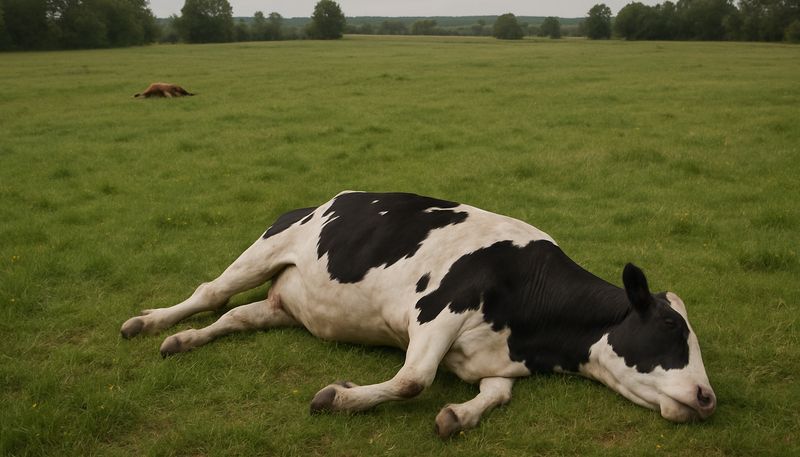
Mysterious Deaths on the Farm
A mysterious wave of cattle deaths in Croatia, initially suspected to be poisoning, was ultimately confirmed as an anthrax outbreak, prompting police involvement, public health measures, and farmer skepticism.
In mid‑July 2025, cattle in rural Split‑Dalmatia County began dying unexpectedly. Ranchers first noticed their animals collapsing with no obvious symptoms—no fever, no illness, no signs of disease. Initially, the veterinarians tested the carcasses for common viral and bacterial pathogens. The first set of samples all came back negative, leaving authorities puzzled. Some even suspected intentional poisoning, prompting the involvement of the police to rule out foul play.
Police Alerted Amid Poisoning Concerns
With no disease identified and continued cattle deaths, veterinarians and farm owners grew suspicious. Could someone be poisoning the animals? The police were called in. According to the director of the Croatian Veterinary Institute, initial tests showed no signs of viral or bacterial infection, deepening the mystery.
Breakthrough: Anthrax Detected
After further sampling and analysis, authorities received confirmation: anthrax. A case was confirmed when, out of 16 tested samples, one tested positive, and subsequent testing found more cases. The Ministry of Agriculture officially recognized the first anthrax case and set up a control zone around affected farms.
Expansion of Outbreak
By July 21, samples from Maovice (Vrlika municipality) revealed two more anthrax-positive cattle out of three tested. In response, the government:
Established an anthrax control zone
Began vaccinating livestock
Started chemoprophylaxis with antibiotics for around 41 people who had contact with infected animals
Public Health Response
Affected individuals received preventive antibiotics for at least ten days
No human cases have been reported yet, and no symptoms emerged in treated contacts
The control zone and vaccination campaign were implemented swiftly to prevent further spread
Why Now? The Role of Soil & Environment
Anthrax spores can lie dormant in soil for decades. Disturbances like drought, flooding, or soil movement can bring spores to the surface. Experts believe this outbreak may be linked to such environmental triggers, common in Croatia’s river plains
The Bigger Picture: Croatian Anthrax Cases
This isn’t Croatia’s first encounter with anthrax:
A major outbreak in 2022 in Lonjsko Polje caused 29 confirmed animal cases and 17 human cases, all cutaneous, treated successfully
Following that event, Croatia increased vaccinations and surveillance in known endemic “anthrax districts”
Takeaway
This episode underscores the complex challenges of diagnosing rare zoonotic diseases:
Hidden pathogens can lurk undetected for years.
Early false negatives can mislead investigators.
Collaboration among veterinarians, police, health officials, and farmers is crucial.
The silver lining? Swift detection and response have contained the outbreak, and no human illnesses have surfaced. But trust must be rebuilt through transparent testing and open communication.
Sources:
